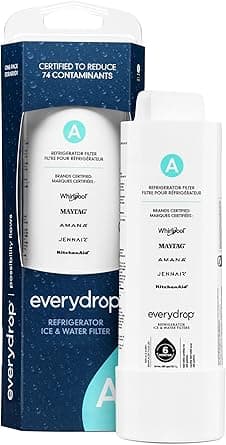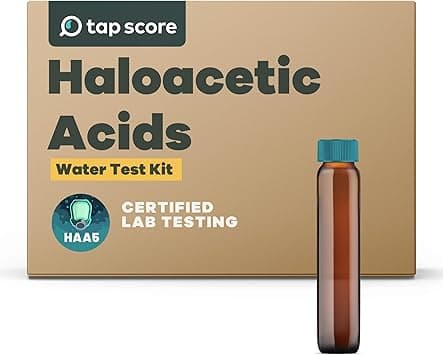Canton Tap Water Quality Report
Canton's water has 8 contaminants above EPA MCLGs. We recommend using a certified water filter.
Utility
CANTON WATER SYSTEM
People Served
14,700
MCL Violations
0
Last Updated
Jul 30, 2024
Is Canton Tap Water Safe to Drink?
Canton's water has 8 contaminants above EPA health-based guidelines. We strongly recommend using a certified water filter to reduce exposure to these contaminants. Check our filter recommendations below for NSF-certified options that can remove the specific contaminants found in Canton's water.
The data below shows test results from CANTON WATER SYSTEM, which serves 14,700 people in the Canton area. Water quality testing is conducted regularly and reported to the EPA. This report was last updated Jul 30, 2024.
Canton Water Quality Test Results
Key Water Quality Metrics
Contaminants Detected
⚠️ Contaminants Above EPA MCLG (8)
Bromodichloromethane
What is Bromodichloromethane?
Member of trihalomethanes (THMs) that form in water treated with chlorine
Health Effects
Health protective benchmarks for BDCM are based on carcinogenicity and liver toxicity observed in animal studies. The EPA has classified BDCM as a probable human carcinogen. Results from animal studies also suggest that kidney, immune system, spleen, and developmental toxicity are associated with exposure to BDCM. BDCM has been shown to produce DNA changes (genotoxicity) in laboratory studies.
Affected Organs
Common Sources
Perfluorooctanesulfonic acid
What is Perfluorooctanesulfonic acid?
Part of a class of synthetic compounds known as per- and polyfluoroalkyl substances (PFAS) widely used to make products more resistant to stains, water, and grease. It is found in fabrics, fire-fighting foams, cleaning products, hydraulic fluids, metal plating, and paper. Although PFOS production has been phased out in the US, exposure is still a major concern due to its high degree of persistence in the environment and in the body as well as the use of legacy products and imported goods. Many adverse health effects have been linked to PFOS exposure, including developmental, liver, and immunological problems and increased cancer risk. EPA has found that there is suggestive evidence that PFOS is a human carcinogen.
Health Effects
As with many PFAS compounds, research into the health effects of PFOS is rapidly evolving. Epidemiological studies have shown associations between elevated PFOS levels and increased total and low-density lipoprotein cholesterol ('bad cholesterol') as well as immune toxicity (decreased antibody response). Animal studies indicate that PFOS exposure is related to adverse developmental effects, liver toxicity, immune toxicity, and an increased risk of liver and pancreatic cancer.
Affected Organs
Common Sources
Perfluorooctanoic acid
What is Perfluorooctanoic acid?
Perfluorooctanoic acid (PFOA) is a synthetic chemical that belongs to a group of chemicals known as per- and polyfluoroalkyl substances (PFAS). It is used in various industrial applications and consumer products for its water- and grease-resistant properties.
Health Effects
Exposure to PFOA has been linked to several health issues, including developmental effects in fetuses, increased cholesterol levels, liver damage, thyroid disease, and certain types of cancer.
Affected Organs
Common Sources
Dichloroacetic Acid (DCA)
What is Dichloroacetic Acid (DCA)?
Member of haloacetic acids (HAAs) that form as byproducts when chlorine reacts with organic matter
Health Effects
Health protective benchmarks for DCA are based on evidence of increased cancer risk and liver toxicity observed in animal studies. Adverse effects to the male reproductive system have also been associated with elevated levels of DCA in animal studies. The EPA classifies DCA as a likely human carcinogen.
Affected Organs
Common Sources
Chloroform
What is Chloroform?
Member of trihalomethanes (THMs) that form in water treated with chlorine and is generally the most abundant THM formed in drinking water
Health Effects
Health protective benchmarks for chloroform have been developed based on kidney and liver carcinogenicity observed in animal studies, and liver toxicity observed in occupational studies. The EPA classifies chloroform as a probable human carcinogen based on animal evidence, and there is additional epidemiological evidence that may increase the risk of colon and bladder cancer in humans. Results from animal studies also suggest that exposure to chloroform can cause liver, developmental and immune toxicity. Acute exposure to low levels of chloroform will cause nervous system toxicity.
Affected Organs
Common Sources
Total THMs
What is Total THMs?
Group of contaminants that form in drinking water systems when a disinfectant, typically chlorine, reacts with organic matter
Health Effects
Drinking water standards for total THMs are based on evidence of carcinogenicity in human and animal studies, as well as liver and kidney toxicity observed in animal studies. Individual THMs have been further associated with developmental, immune, spleen, and genotoxicity.
Affected Organs
Common Sources
Trichloroacetic Acid (TCA)
What is Trichloroacetic Acid (TCA)?
Member of haloacetic acids (HAAs) that form as byproducts when chlorine reacts with organic matter
Health Effects
Health protective benchmarks for TCA in drinking water have been developed based on liver toxicity and carcinogenicity observed in animal studies. EPA has classified TCA as a possible human carcinogen. Developmental toxicity has also been associated with exposure to TCA based on evidence from animal studies.
Affected Organs
Common Sources
Aluminum
What is Aluminum?
Naturally-occurring metal found in the Earth's crust with multiple industrial uses, including the construction of buildings and powerlines, and the manufacture of vehicles, consumer electronics, household appliances, and kitchenware. It is also frequently used in municipal water treatment to clarify water from lakes and reservoirs. Health effects of aluminum exposure are inconclusive but actively researched.
Health Effects
Much of the current research on the health effects of aluminum in drinking water is still inconclusive and controversial. Health protective benchmarks for aluminum in drinking water set by the California Office of Environmental Health Hazard Assessment are based on potential neurotoxicity and developmental toxicity in premature infants. People more susceptible to aluminum impacts include infants and people with impaired kidney function.
Affected Organs
Common Sources
Understanding the Data
This data comes from your local water utility testing. The bar charts compare detected levels against EPA's Maximum Contaminant Level Goal (MCLG). Contaminants above the MCLG are shown by default and may require filtration. All other tested contaminants are within safe levels and can be viewed by expanding the section above.
Recommended Water Filters for Canton
Based on Canton's water quality data, these NSF-certified filters are recommended to remove contaminants above EPA MCLGs.

Whirlpool Corporation
W11256135
NSF Certified:
Capacity
1001 gal
Filter Life
3 mo
Flow Rate
0.7 gpm
Removes 19 contaminants:
1,2 Dichlorobenzene, 1,4 Dichlorobenzene, 2,4-D, Asbestos, Atrazine +14 more

Whirlpool Corporation
W11569861
NSF Certified:
Capacity
1001 gal
Filter Life
3 mo
Flow Rate
0.52 gpm
Removes 22 contaminants:
1,2 Dichlorobenzene, 1,2,4 Trichlorobenzene, 1,4 Dichlorobenzene, 2,4-D, Asbestos +17 more

iSpring Water Systems LLC
RCC7
NSF Certified:
Daily Production
21.04 gpd
Removes 1 contaminants:
Total Dissolved Solids

iSpring Water Systems LLC
RCC7-BLK
NSF Certified:
Daily Production
25.41 gpd
Removes 9 contaminants:
Asbestos, Barium, Cadmium, Chromium (Total), Copper +4 more
Verify Your Water Quality with Independent Testing
With 8 contaminants above EPA health guidelines, independent laboratory testing provides a second opinion and can track changes over time.

SimpleLab
Advanced Home Water Test
$369
Most comprehensive home water test including all standard tests plus additional parameters for ultimate peace of mind.

SimpleLab
Standard Home Water Test
$232
Comprehensive water analysis testing over 200 contaminants including bacteria, heavy metals, and chemical compounds.

Tap Score
Haloacetic Acids (HAA9) Test
$275
Tests for disinfection byproducts formed when chlorine reacts with organic matter in water treatment.
Frequently Asked Questions About Canton Tap Water
Canton's water has 8 contaminants above EPA MCLGs. We strongly recommend using a certified water filter to reduce exposure to these contaminants. Check our filter recommendations below for NSF-certified options that can remove the specific contaminants found in Canton's water.